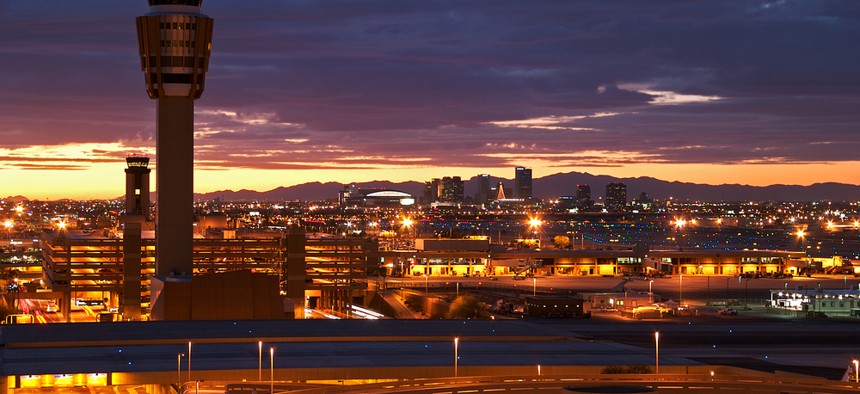
Anton Foltin/Shutterstock.com
One Way to Avoid Flight Delays: Help Air-Traffic Controllers Do a Better Job
Hamsa Balakrishnan develops algorithms that help controllers and pilots better manage who's taking off and when.
So your flight's delayed. No surprise there: A 2009 FAA study found that up to one quarter of U.S. arrivals are. At best, you end up wasting a couple hours of precious life; at worst, you've got to reorient plans for days or even weeks.
And that's just for the individual traveler. In sum, delays are a huge dead weight on the economy. In the same study, the FAA found that in 2007, late flights cost the U.S. some $31.2 billion —with more than half that amount footed by passengers. There's also an environmental cost, as long-taxiing planes burn wastefully through fuel.
Yet when it comes to controlling the sources of delays, it's tough going. You can't change inclement weather, and most airlines overbook as a policy. Nor can you always predict a last-minute repair or faulty landing—all of which can have a domino effect on other departures and arrivals.
But MIT Associate Professor of Aeronautics and Astronautics and Engineering SystemsHamsa Balakrishnan is trying to improve the one variable in air-traffic performance that can be helped: The human factor. Using historical data about what causes delays, she develops algorithms that help air-traffic controllers and pilots better manage who's taking off and when, and be able to predict congestion.
"We try to look at times in the past when the system operated really well, and try to understand what decisions were made that day by pilots and controllers," Balakrishnan says. "We want to help everyone make those good decisions"—not just those workers with more experience and know-how.
After years of developing and testing models of how airports operate under different conditions, Balakrishnan and colleagues worked with air-traffic controllers at Boston's Logan International Airport to determine how best to communicate the recommendations of the algorithm.
"Let's say you have bad weather in the airspace," she says. "We would know there's going to be lower capacity for aircraft on a runway, maybe only 10 taking off. We can make a recommendation to the air-traffic controller to meter out departures over time to maintain efficiency and reduce congestion."

That was in 2010. Balakrishnan and her team returned to Logan a year later and tested an updated version of the model.

This time, the researchers used Android tablets (see left) to display a larger scope of information for air-traffic controllers, such as how many aircraft that had announced they were ready for pushback, and visual cues that displayed the passage of time. Responses from air traffic controllers were overwhelmingly positive. Andover eight four-hour testing periods, average delay times dropped, and an estimated 2,650 gallons of fuel—plus 29 tons of CO2 emissions—were saved.
For all its advances, Balakrishnan understands her work as part of a bigger picture: Better transportation systems, period. "We're really thinking about mobility—how to get people from point A to point B," she says. "There are often situations where we should be thinking of a more multi-modal system design." She points to high-speed rail as a possible substitute for high-volume inter-city airline routes. (Of course, CityLab readers know well not to hold their breath.)
Meanwhile, Balakrishnan is working closely with the FAA to integrate her anti-delay models into plans for NextGen, the transformation of American air-traffic control into a satellite-based system, slated for nationwide roll-out by 2025 . As demand for air travel continues to rise —commercial and unmanned aviation alike—streamlining the skies has never been more essential.
h/t: Phys.org
( Image via Anton Foltin / Shutterstock.com )
NEXT STORY: GOP Can't Stop a Lame-Duck AG Pick






